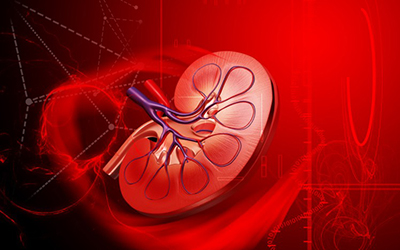 More and more Malaysians are diagnosed with kidney failure each year. With the rising prevalence of diabetes mellitus and hypertension in Malaysia, not surprisingly, there are currently so many Malaysians being diagnosed with chronic kidney disease. Many of these individuals with chronic kidney disease subsequently had to be on dialysis.
More and more Malaysians are diagnosed with kidney failure each year. With the rising prevalence of diabetes mellitus and hypertension in Malaysia, not surprisingly, there are currently so many Malaysians being diagnosed with chronic kidney disease. Many of these individuals with chronic kidney disease subsequently had to be on dialysis.
Individuals with chronic kidney disease have to be on dialysis (also known as renal replacement therapy) once they develop symptoms of kidney failure. When the kidney starts to malfunction, the level of waste product in the body (called urea and creatinine) will become so high that we began to feel unwell. Furthermore, the body cannot excrete excess water once the kidney stops functioning, causing fluid to build up in the lungs making it difficult to breath.
In order to keep them healthy, patients with end stage kidney disease has to undergo treatment that is known as dialysis. Dialysis machines basically are huge filter machines that function like a kidney to remove waste products and excess water in the body. In order to do that, doctors need to make dialysis access either through the abdomen (for peritoneal dialysis) or through the blood vessel (for hemodialysis). After that, the patient’s blood will be circulated into the dialysis machine which will filter it and then pump back the filtered blood into the patient.
Most patients that require dialysis after their kidneys failed need to be on dialysis for the rest of their lives. In Malaysia, there are 32,000 patients undergo maintenance dialysis in January 2014. These numbers were expected to increase further in the future.
Isn’t it scary? Yes!
Many patients are afraid to go for dialysis. They have heard so many horror stories about it. People tell them it is painful, especially if the doctor had to put in the dialysis catheter in the neck or in the groin area. Some shared stories how they developed complications after dialysis – like infection, abdominal injury or massive bleeding. Some even share stories about people they know die after doing dialysis.
But what they are not aware – for most people with advanced kidney failure – dialysis offers them a new lease of life. With dialysis, many individuals can continue to lead a healthy life despite living with a non functioning kidney. For young patients with kidney failure – this means longer opportunity for them to continue to work, support and take care of their family. For older patients, having dialysis have allowed them to continue staying healthy, enjoy more time with family and to do their religious obligations.
The dialysis process can be demanding, expensive and time-consuming. Most people can adapt to this well and still manage to lead a fulfilling life. However, remember that dialysis is not a magical therapy that cures all. The treatment only partly replaces some functions of the kidney. It does not benefit other health problems and indeed may make some of them worse. Because of this, for some people, dialysis may not extend life or improve its quality.
For those who have other serious medical problems, fully dependent or very frail medically, dialysis can become an added burden.
Always discuss with your health care provider (in this case – your physician or nephrologist) in making the decision whether to start dialysis or not. You have the right to decide either to start or not to start dialysis. Once you decide to start dialysis, your doctor will explain how dialysis can be done for you and give you an option on which mode of dialysis will be suitable for you.
Dr Nurhidayati is a permanent columnist for The Malaysian Medical Gazette and an internal medicine physician.
[This article belongs to The Malaysian Medical Gazette. Any republication (online or offline) without written permission from The Malaysian Medical Gazette is prohibited.]
